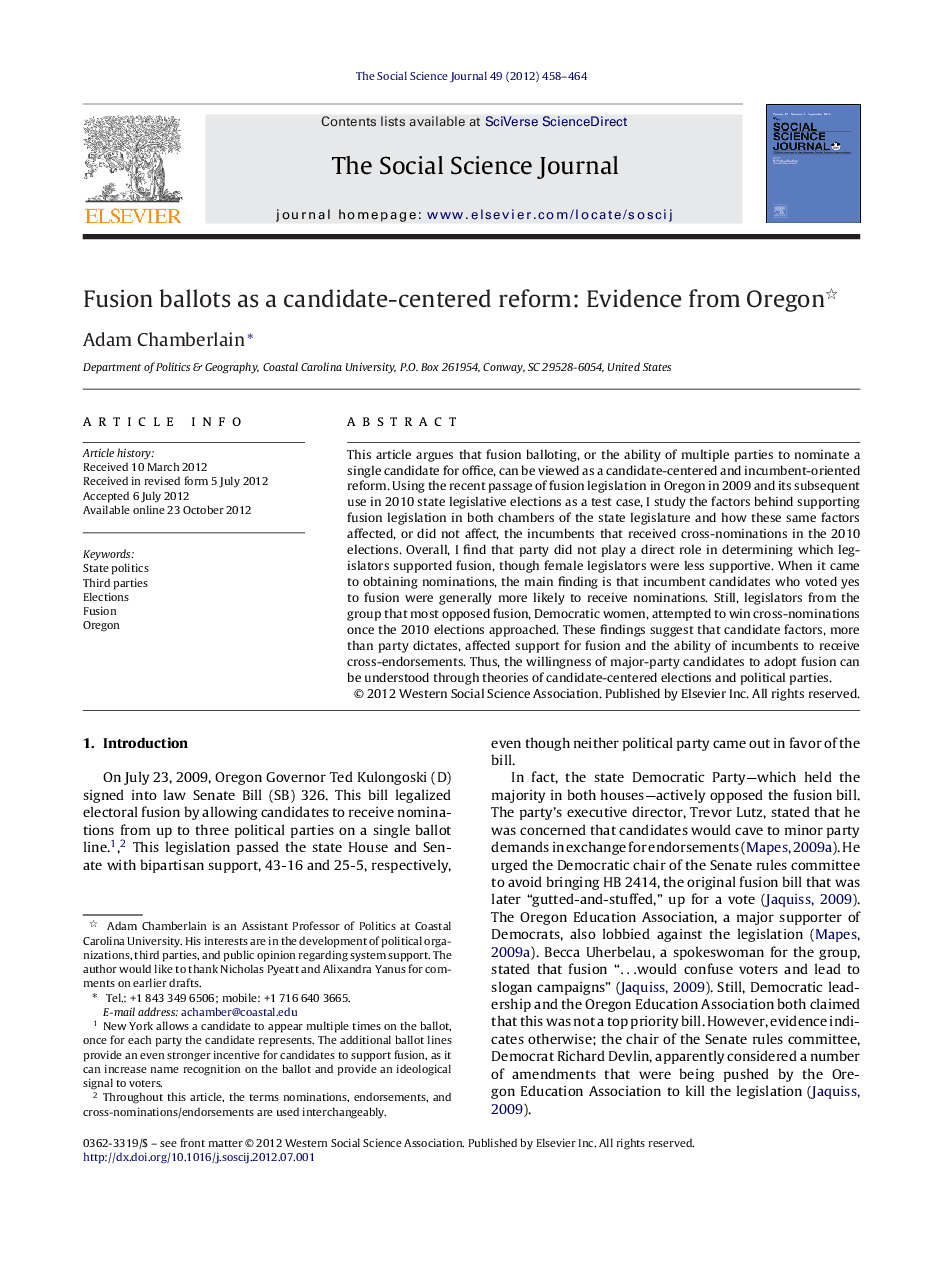| Article ID | Journal | Published Year | Pages | File Type |
|---|---|---|---|---|
| 140221 | The Social Science Journal | 2012 | 7 Pages |
This article argues that fusion balloting, or the ability of multiple parties to nominate a single candidate for office, can be viewed as a candidate-centered and incumbent-oriented reform. Using the recent passage of fusion legislation in Oregon in 2009 and its subsequent use in 2010 state legislative elections as a test case, I study the factors behind supporting fusion legislation in both chambers of the state legislature and how these same factors affected, or did not affect, the incumbents that received cross-nominations in the 2010 elections. Overall, I find that party did not play a direct role in determining which legislators supported fusion, though female legislators were less supportive. When it came to obtaining nominations, the main finding is that incumbent candidates who voted yes to fusion were generally more likely to receive nominations. Still, legislators from the group that most opposed fusion, Democratic women, attempted to win cross-nominations once the 2010 elections approached. These findings suggest that candidate factors, more than party dictates, affected support for fusion and the ability of incumbents to receive cross-endorsements. Thus, the willingness of major-party candidates to adopt fusion can be understood through theories of candidate-centered elections and political parties.
► Oregon's legalization of fusion ballots through the legislature in 2009 is studied. ► I argue that this can be viewed as a candidate- and incumbent-centered reform. ► Results show party played little role in passing fusion legislation. ► Incumbent Democrats benefited the most by receiving cross-nominations in 2010. ► Generally, support for fusion helped incumbents win nominations.
